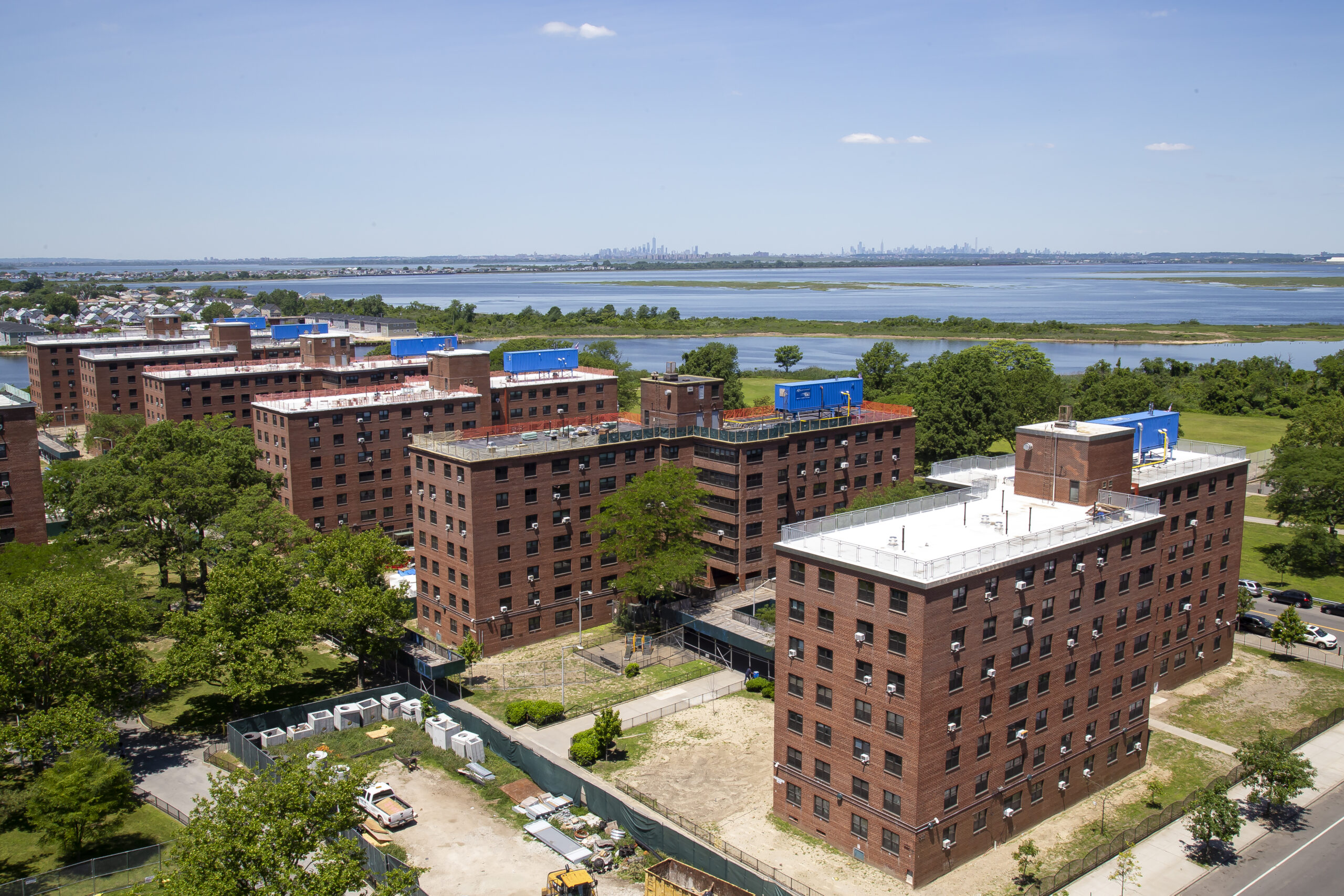NYCHA Unveils Strategic Roadmap for Reducing Greenhouse Gas Emissions
NYCHA recently released its Climate Mitigation Roadmap, a portfolio-wide strategic plan for reducing greenhouse gas (GHG) emissions from NYCHA operations. It’s the Authority’s most ambitious effort in more than 25 years of energy conservation programs.
NYCHA developed the Roadmap to meet the City’s Local Law 97 requirement of a 40 percent reduction in GHG emission by 2030 and 80 percent by 2050. The industry-leading plan, which was announced in celebration of Energy Efficiency Day earlier this month, commits NYCHA to electrifying its buildings, the first such commitment among public housing authorities.
“NYCHA is meeting the challenge of climate change head-on by leveraging sustainable technology to significantly reduce GHG emissions across our 2,410 residential buildings,” said NYCHA Chair and CEO Greg Russ. “Replacing costly fossil fuel-burning systems with low-carbon, electric systems benefits our residents, our neighborhoods, and our city.”
The Climate Mitigation Roadmap outlines the Authority’s 10-year and 30-year plans for achieving near-net-zero carbon emissions through four operational improvement strategies: (1) reducing energy waste; (2) moving away from steam heating technology; (3) improving critical building infrastructure; and (4) incentivizing residents to reduce in-apartment energy usage.
“NYCHA is using the full weight of its size and buying power to make cutting-edge green technology more accessible for public housing residents, and New Yorkers in general,” said NYCHA’s Executive Vice President of Capital Projects Steve Lovci. “The roadmap we’ve developed convenes three years of technical studies and a quarter century’s worth of actionable research on how to adapt the energy infrastructure of aging multifamily residential buildings for the 21st century.”
Starting this year, NYCHA will become the first public housing authority in the nation to adopt “beneficial electrification” as a policy, where on-site energy consumption is reduced by switching to a low-carbon electrical grid. A 2017 study by the National Renewable Energy Laboratory found that beneficial electrification has the potential for reducing nationwide GHG emissions by 40 percent.
The Roadmap is already underway, as NYCHA is currently in procurement for its first near-net-zero RetrofitNY pilot and its first large-scale electrification project. NYCHA also recently partnered with the New York State Energy Research and Development Authority to stage the NextGen HVAC Innovation Challenge, which invites HVAC manufacturers to develop 120-volt, window-mounted, cold-climate air-source heat pumps for the United States. This product would not only replace outdated steam-based heating at NYCHA but also meet a pressing need for many multifamily buildings in New York – and possibly much of the country.
Last month, NYCHA worked with one local manufacturer to demonstrate a prototype of a similar heat pump unit with some of the desired characteristics at Fort Independence Houses in the Bronx.
Photo caption: The rehabilitation of Ocean Bay-Bayside Apartments is an example of how electrification under the Climate Mitigation Roadmap can be performed through hydronic conversion. As part of the 2019 project, the central steam plant was decommissioned, hydronic boilers were provided for each building, and steam radiators were replaced with high-efficiency hot water convectors.







